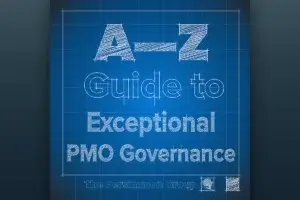Common Obstacles to Thinking Strategically (And What To Do About Them)
Albert Einstein said, “We cannot solve our problems with the same thinking we used when we created them.”
The ability to thinking strategically is an essential skill in today’s fast-paced business environment. We weren’t surprised to see it listed as one of the Twenty Core Power Skills Needed for the Future Workplace. Strategic thinking forces you to step back from a problem, gather information and generate more optimized, and often more innovative solutions. However, thinking strategically on a consistent basis can be a difficult skill to master. Following are four common obstacles to thinking strategically, and how you can overcome them.
1. Habit
Conventional wisdom is that the average adult makes as many as 35,000 decisions every day. According to the best minds at Cornell University, no fewer than 226 of those decisions revolve around food. It would be impossible to carefully consider each of these decisions. Instead, we rely on heuristics — mental habits and shortcuts that allow us to quickly process information, make decisions and move through our day without constantly stopping to think about the next course of action.
Modern business leaders are bombarded with decisions each day, ranging anywhere from where to have lunch to where to locate your organization’s new headquarters. Recent research shows that decision-making power is a depletable resource, which often leads our exhausted brains to rely on heuristics to make decisions that require more nuanced thinking.
How to Break the Circle of Habit: While decisiveness is important, don’t fall into the trap of believing that every decision must be made within moments of being presented with it. Block time (preferably early in the morning) to consider current or upcoming decisions with a fresh mind. For big decisions, consider using a model like SWOT to quickly document what you know, what you don’t, and what you need to find out to make a better call.
2. Unconscious Biases
Unconscious biases (also called implicit biases) are stereotypes that unconsciously affect how we process information and make decisions. Unconscious biases are influenced by our background, cultural environment, and personal experiences. Even though unconscious biases can be favorable (all young people are great with technology) or unfavorable (women are less competent than men), becoming aware of your biases is crucial for strategic thinking.
How to Bust Bias: Consider taking an Implicit Association Test to uncover biases of which you were unaware. Or, according to unconscious biases expert Dr. Dionne Poulton, you could simply be more curious with yourself. Ask questions like, Why don’t you like that person? Who am I inviting into the conversation? How diverse are the people I surround myself with?
Related Article: How Unconscious Biases Contribute to Conflict in the Workplace
3. Assumptions
Assumptions, things we accept as true without proof, and convictions, our firmly held beliefs, are both counterproductive to strategic thinking. Most of us are guilty of confirmation bias, the tendency to look for information that confirms what we already believe to be true. In his Harvard Business Review article, “What It Takes to Think Deeply About Complex Problems,” author and consultant Tony Schwartz points out that the challenge of strategic thinking is to avoid confirmation bias and challenge your own assumptions.
“This practice begins with asking two key questions in the face of any difficult decision,” he writes. “‘What am I not seeing here?’ and ‘What else might be true?’”
How to Challenge Assumptions: At key decision points (such as finalizing a strategic plan), ask yourself, “For this plan to work, what must be true?” For each of those things, note your confidence level. For anything below 50% confidence, consider doing more research, or establishing “trigger points” at which you will re-evaluate your decision based on new information.
Related Article: Three Reasons We Make Assumptions (And What to Do About Them)
4. TMI (Too Much Information)
We do business in an information-rich world. Companies collect 2.3 trillion gigabytes of data every day, and the internet gives us near-instant access to tremendous pool of knowledge and expertise. However, the ready availability of massive amounts of information is both a blessing and a curse.
On the one hand, this information helps us make better, more data-driven decisions. On the other hand, seeking too many inputs can lead to analysis paralysis. Strategic thinkers have to hone their ability to separate signal from noise, to find the information that matters and ignore the rest.
How to Separate Signal from Noise: Notice what data points have emotional weight for you. Be even more careful and critical of these data points. We tend to “zoom in” on data points that impact us emotionally, while skipping over or failing to notice all together the evidence that’s really driving our current situation.
5. Tyranny of the Urgent
It’s tough to think strategically when everything on your calendar–and in your brain–deals with the here and now. We are most emotionally connected to the present and the past, and least emotionally connected to the future–which partially explains why we are so bad at taking time to strategize and plan.
How to Break Free: Set strategy meetings with yourself, and treat them as sacred. Decide in advance the “agenda,” and keep the appointment, every time. Strategic thinking doesn’t happen by accident. It happens by intention and action.









